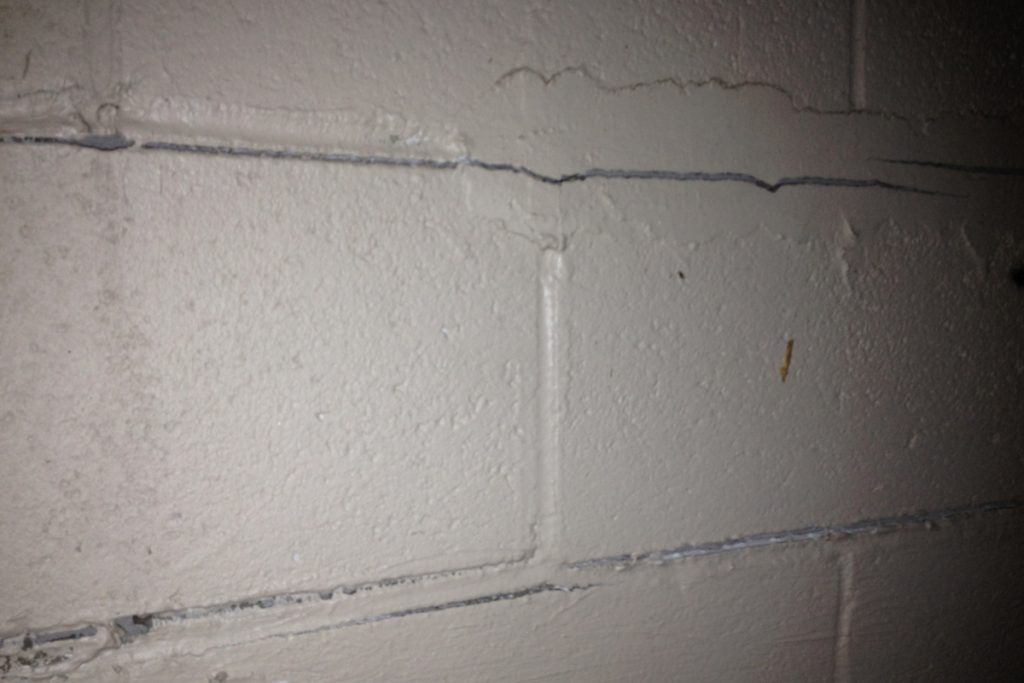The difference between foundation crack repair and crack waterproofing
In any discussion involving foundation crack repair, it is important to make a distinction between repairing a crack, and waterproofing a crack.
Waterproofing a foundation crack is a straightforward and common process, regardless of the foundation type; however, the available foundation crack repair options for poured concrete and concrete block / cinder block foundation cracks are quite different. Generally, poured concrete foundation cracks can be filled with injected resins, while concrete block / cinderblock / cinder block foundation cracks cannot.
Poured concrete foundation crack repair
Repairing cracks in poured concrete foundations is usually undertaken for one or two reasons:
- To fill foundation cracks in order to restore the structural integrity of the foundation; and
- Basement crack repair for the prevention, or stopping of a basement leak.
The repair of foundation cracks
To date, there is really only one way to repair poured concrete foundation cracks while simultaneously restoring the structural integrity of the foundation without the use of piering; depending on the size of the crack the foundation crack may have to be stabilized. This foundation crack repair method involves epoxy injection and is referred to as an epoxy crack injection.
An epoxy injection fills foundation cracks and simultaneously, binds, or glues, both sides of the crack together with a bond strength that exceeds the strength of the concrete itself; resulting in an outstanding foundation crack repair. In situations where crack stabilization is desired, reinforcing staples can be installed. The installation of reinforcing staples prevents foundation cracks from widening.
Click on this hyperlink for more information on crack stabilization.
Waterproofing foundation cracks
Basement crack repair undertaken solely for the purpose of dealing with a basement leak or crack sealing can be accomplished using both epoxy crack injection and polyurethane crack injection techniques. It should be noted that, unlike epoxy injection, polyurethane injection is strictly a waterstopping repair used to stop basement leaks.
Foundation crack repair using hydraulic cement
Note: The misguided fear that injection crack repairs are expensive often results in the use of hydraulic cement to stop basement leaks. Experience has shown that the application of hydraulic cement over top of a crack is not a permanent repair, nor is it beneficial for your foundation.
Hydraulic cement does not bond very well to the surface of a poured concrete foundation wall, this is because the chemical bond between the foundation wall and the hydraulic cement applied to the wall is weak; over time, hydraulic cement will separate from the concrete wall onto which it was applied. It should be noted that crack sealing using hydraulic cement on the inside wall of a foundation ultimately traps water in the foundation crack and causes the concrete in proximity to the crack to become saturated and deteriorate rapidly.
Concrete block / cinder block foundation crack repair
Concrete block / cinder block foundations, most of the time, develop cracks in the mortar joints between the blocks. Concrete block / cinder block foundation cracks in the mortar joints are easily repaired externally by tuck pointing (also referred to as re-pointing). Tuck pointing of concrete block foundations must be undertaken on the exterior side of a foundation because cracking in mortar joints allows water to penetrate the foundation. Therefore, preventing water penetration is only achievable by carrying out an exterior foundation crack repair. Unfortunately, such foundation crack repairs require excavation of the foundation.
Repairing mortar joint foundation cracks from the interior of a foundation will enhance the esthetics but accomplish nothing as far as basement waterproofing is concerned.
When to worry about concrete block / cinder block foundation cracks
It is beyond the scope of this blog to discuss the significance of foundation cracks in concrete block foundations; however, one must be vigilant when one encounters horizontal cracking. Horizontal foundation cracks in a concrete block foundation are caused by soil pressure on the wall and are symptomatic of structural foundation failure.
Concrete block / cinder block foundations failures can also exhibit other cracking patterns, such as step cracking. Step cracking is an indication of foundation settlement, the seriousness of which requires professional assessment.
Concrete block foundation crack repair is not limited to the repair of cracked mortar joints, fairly often there will be observable cracks in the concrete blocks / cinder blocks themselves. A cracked concrete block is a sure sign that foundation settlement or movement has occurred. Fortunately, cracked concrete block foundations can be repaired and reinforced; depending on the severity, excavation may or may not be required.
Advice on foundation crack repairs
It is always advisable to consult an expert when it is believed that foundation crack repair, or basement crack repair is required. A professional assessment of foundation cracks is crucial because only a proper assessment of a foundation crack can determine the foundation crack repair method that is the most appropriate for a given situation.
